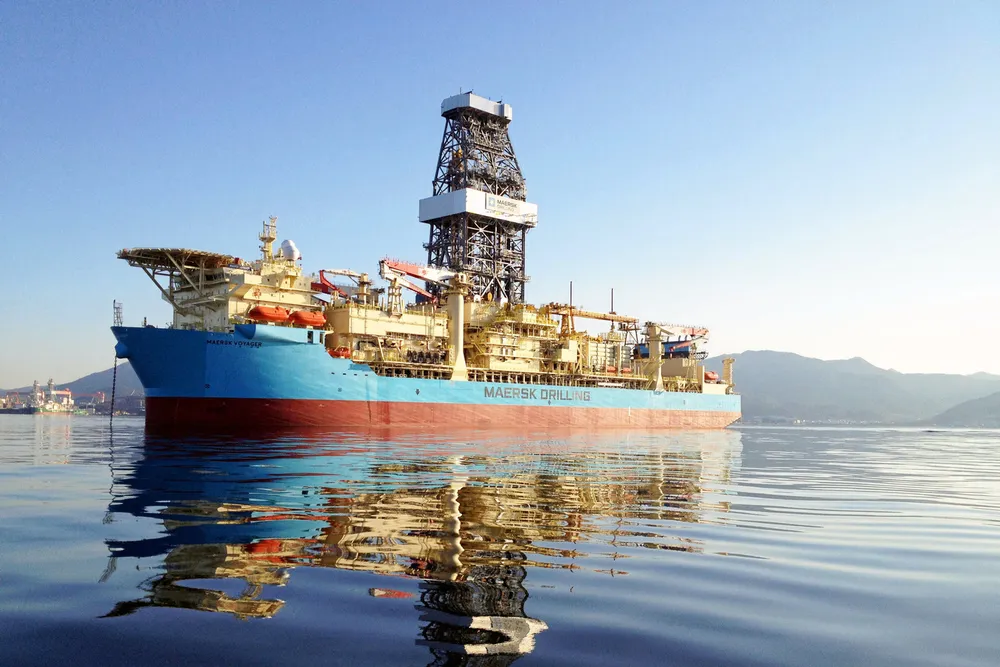Life on Venus: TotalEnergies’ Namibia wildcat hits reservoir amid optimism
Promising early indications at ultra-deepwater wildcat, multiple exploration contacts tell Upstream, while other sources say its early days and urge caution

TotalEnergies may have a major discovery on its hands offshore Namibia, with multiple sources telling Upstream that initial results from its Venus-1 wildcat are promising, albeit others advised prudence.
The French supermajor’s Venus-1 well is targeting a multi-billion barrel prospect located in about 3000 metres of water in Block 2913B, just west of Shell’s recent Graff-1 oil discovery.
It is understood that the Venus-1 probe entered the target reservoir a few days ago and that initial indications appear to be positive.
"Everything is going very well," said one source with direct knowledge of the exploration well.
Another informed exploration contact said initial results are “very, very encouraging”, suggesting that Venus-1 had hit oil and gas in “a very thick reservoir”.
However, this very upbeat view has been downplayed by some well watchers, who urged caution.
A fourth source remarked that the wildcat is probing a prospect that is “much bigger than Graff”, Shell's recent nearby discovery that consultancy Wood Mackenzie estimates could host about 700 million barrels of oil.
Graff-1 was confirmed as a discovery on 4 February by Shell and several well placed sources have told Upstream that the Anglo-Dutch supermajor was poised this week to drill an appraisal well a generous eight kilometres away from the first location.
Despite all these positive initial indicators about the Venus probe, one source familiar with the exploration well urged caution, stressing it was too early to say if a major discovery has been made because the probe “is still in a critical zone”.
Drillship Maersk Voyager spudded Venus-1 in late November and had been expected to wrap up its work about one month ago, but the drilling operation was hit by delays.
Drilling sources told Upstream that heavy weather offshore delayed the operation, while downhole challenges and equipment issues slowed progress, with TotalEnergies forced to drill one sidetrack well.
Upstream was told that Namibia's President Hage Gottfried Geingob has been briefed about the status of the wildcat.
Venus-1 is aiming for a multi-billion-barrel structure that seismic and other data indicated covered a huge area of about 600 square kilometres.
For any discovery to be commercial in waters 3000 metres deep it will have to be significant.
One veteran African explorer suggested: “I’d have thought 700 million to 1 billion barrels is required.”
If the results of the Venus well meet pre-drill expectations of a multi-billion barrel find, it will be a huge boon to other explorers in the Orange basin, already buzzing about the scale of Shell's Graff discovery.
The veteran explorer remarked that “if (the petroleum system) is working (at Venus) there is more running room inboard”, referring to the geology east of TotalEnergies’ block.
Even if Venus-1 fails to find commercial volumes of oil, one experienced southern Africa exploration hand predicted that activity in the Orange basin could be “about to explode”.
This source suggested that the promise of Graff and Venus will likely trigger an increase in drilling activity in the Orange basin across the maritime boundary in South Africa.
There, for example, TotalEnergies and Qatar Energy recently secured major stakes from junior outfit Sezigyn in what is called the Orange Basin Deep Water block, while several other players also hold interests in promising acreage.
The ripples of a big commercial discovery could reach as far as Argentina, as offshore acreage in the hands of major operators in the South American country shows strong geological analogies with the Orange basin.
TotalEnergies has a 40% interest in Venus, with QatarEnergy on 30%, Impact Oil & Gas holding 20% and state-owned Namcor on 10%.
A spokesperson for the French supermajor declined to comment on the status of the Namibian well.
(Copyright)